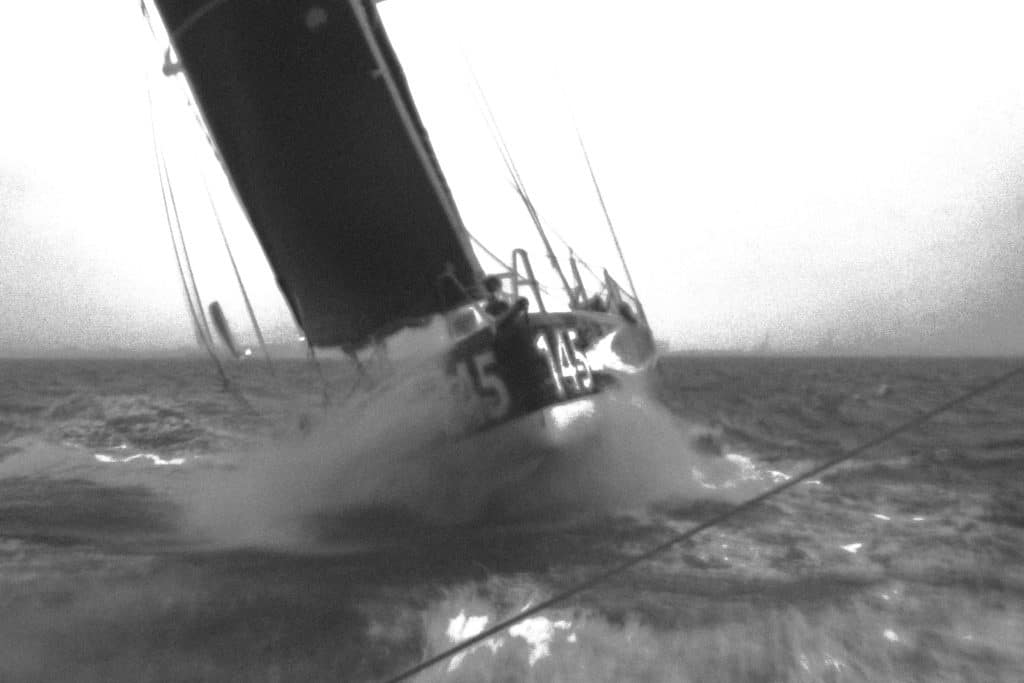
Rain pelts the deck of the Class 40 Tales II, but Pablo Santurde and Gonzalo Botin move around the boat confident and sure-footed. Botin, a 48-year-old amateur sailor and Tales‘ owner, studies the ebony clouds streaming overhead, the first signs of an approaching tropical depression. Santurde, a 28-year-old professional sailor with a stout athletic build, steals Botin’s attention to discuss strategies for the looming start of the Atlantic Cup’s first leg, a 640-mile offshore contest from Charleston, South Carolina to Brooklyn, New York.
They’ve traveled more than 3,000 miles from Spain to Charleston, and they’re intent on winning the leg despite having “never sailed on this side of the Atlantic before,” says Botin. “Tactically we are going to be conservative and stick with the fleet for the most part. We’re not going to do anything too risky.”
In the final seconds before the start, Botin, at the helm, fires off commands to Santurde who dashes from winch to winch, fine-tuning the sail trim. Fifteen minutes into the race, their intensity pays off as they cruise by their competitors on Pleiad and Earendil; but the Frenchmen give chase. Earendil, their primary competition, is crewed by Catheerine Pourre and Antoine Carpentier, winner of the 2015 Rolex Fastnet Race. “Los Francais,” as Santurde and Gonzalez call them, are right back on their tail in no time. Earendil steers a course to leeward of them, and when Santurde and Botin think they shook them, the Frenchmen climb to windward instead.
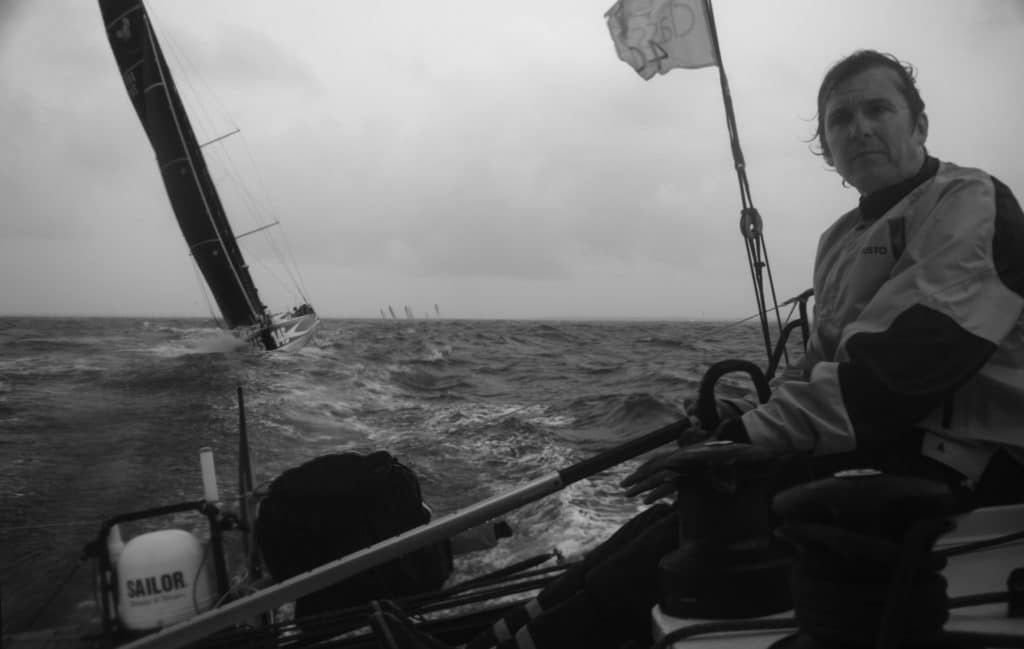
Once clear of Charleston Harbor and out in the open ocean, the power of the lingering tropical depression is undeniable. Waves crash over the deck, the rain is relentless, and 25-knot winds paint streaks of white froth across the grey sea.
The dialogue between Botin and Santurde intensifies as they try to stave off Earendil. A couple adjustments to the mainsail do the trick and Earendil is forced to take their stern again.
The storm reaches full force at dusk. It’s been nine hours since the start and neither Santurde nor Botin have taken a break. Santurde finally relents and climbs through the companionway. Inside Tales II he collapses on the cabin sole and massages his eyes with his thumb and forefinger. The boat pounds through waves but he remains motionless with his hand pressing against his eyelids. Mental exhaustion takes its toll and his sensory input is on overload: the booming waves, the boat’s unsteady movements, the aching muscles, and the beating of his heart. He’s also fighting seasickness, induced by being in the cabin, but 20 minutes of rest will do him good.
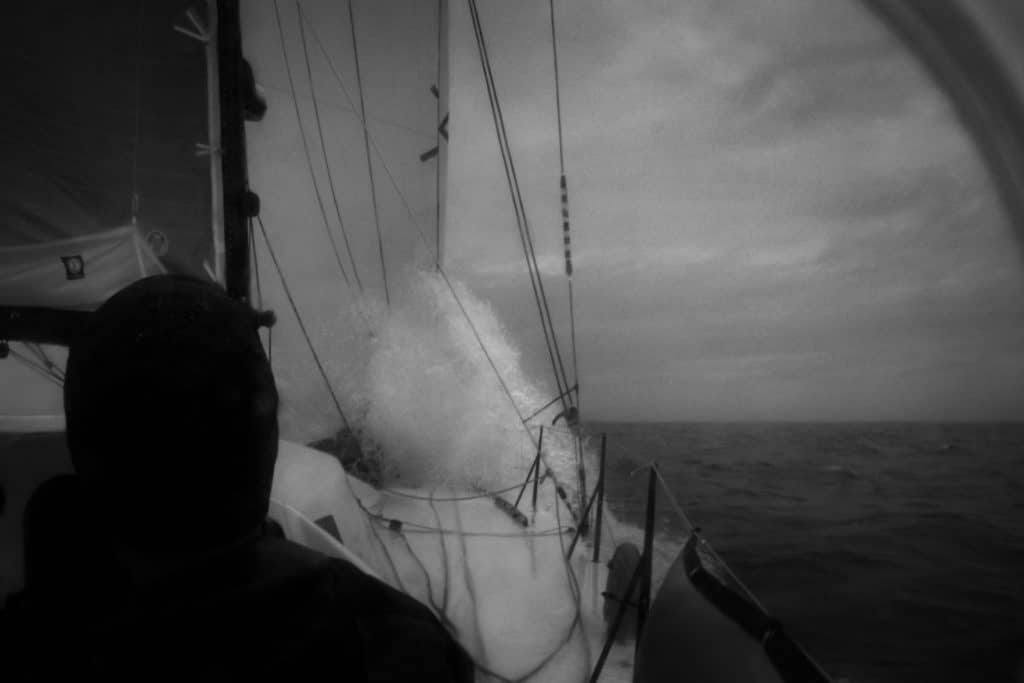
What does he think about to get through those tough moments?
“I think about the next step,” he says. “If I focused on crossing the finish line I’d never make it. Last night, all I was focused on was making it through the night and seeing the sunrise. I knew the storm wouldn’t last long after that.”
After dawn breaks, they tack north and, with a wide grin on his face, Santurde shouts, “Bye-bye low pressure!”
But they aren’t out of the woods yet. Ocean swells are still more than a story high. “The real problem,” says Botin, “is that with an easterly breeze like this it fights the current and the waves get really lumpy. If we went another 10 miles out, we would’ve had to slow down so we don’t break the boat. We got lucky and the wind shifted early so we were able to tack without going any farther out into the Gulf Stream.”
They parallel North Carolina’s coastline on a close reach. The competitors’ sails are visible on the horizon and Santurde and Botin are finally able to start a regular watch schedule. Rough seas, however, make it impossible to fully recover from the previous night’s marathon. They’re sleeping in one- or two-hour spurts, but they say it’s better than 20 minutes they were managing during the storm.
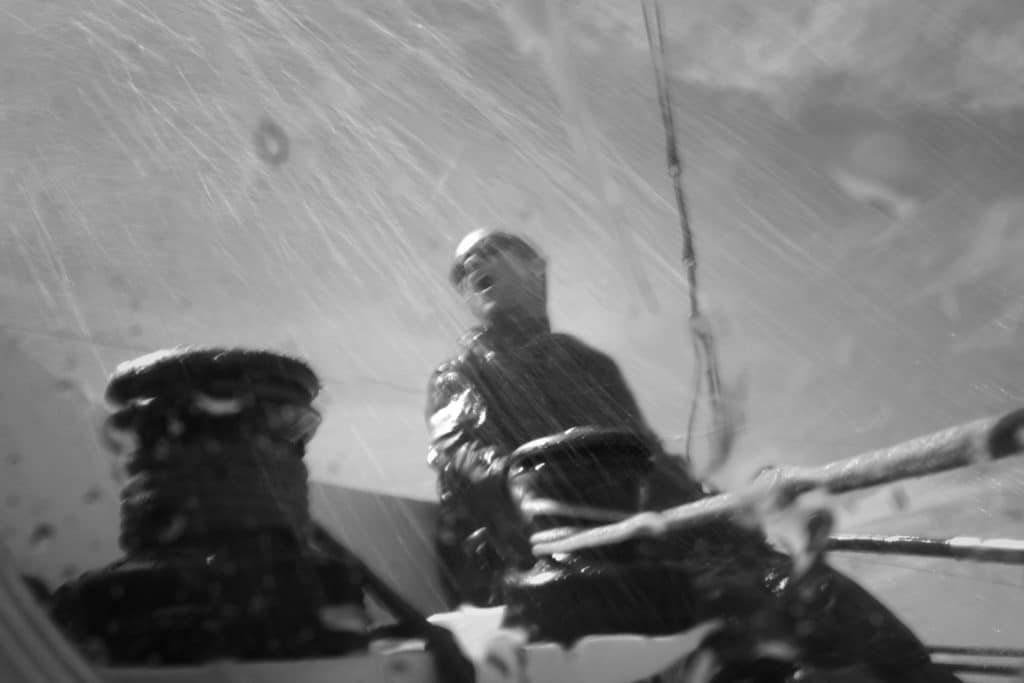
At dusk, the horizon is empty, but the position report from the race organizers places them 2 miles behind Earendil. They’re determined to catch them.
Their second night has a slight reprieve from the bumpy conditions, but it’s short-lived. High winds and torrential downpours return, creating the same heightened sense of urgency at the start. Frantic sail changes throughout the night pay off; by dawn they’re 17.5 miles ahead of Earendil. Only now are they able to relax and enjoy a serene sunrise.
“Everybody is taking pretty much the same route,” Botin says, “so it’s really all about boatspeed and strategically changing the sails to maximize it. Santurde is very good at that. He knows exactly when to change sails and when to hold.”
With an expert eye for reading clouds, Santurde makes sure every wind shift boosts them faster to the finish line in New York Harbor.
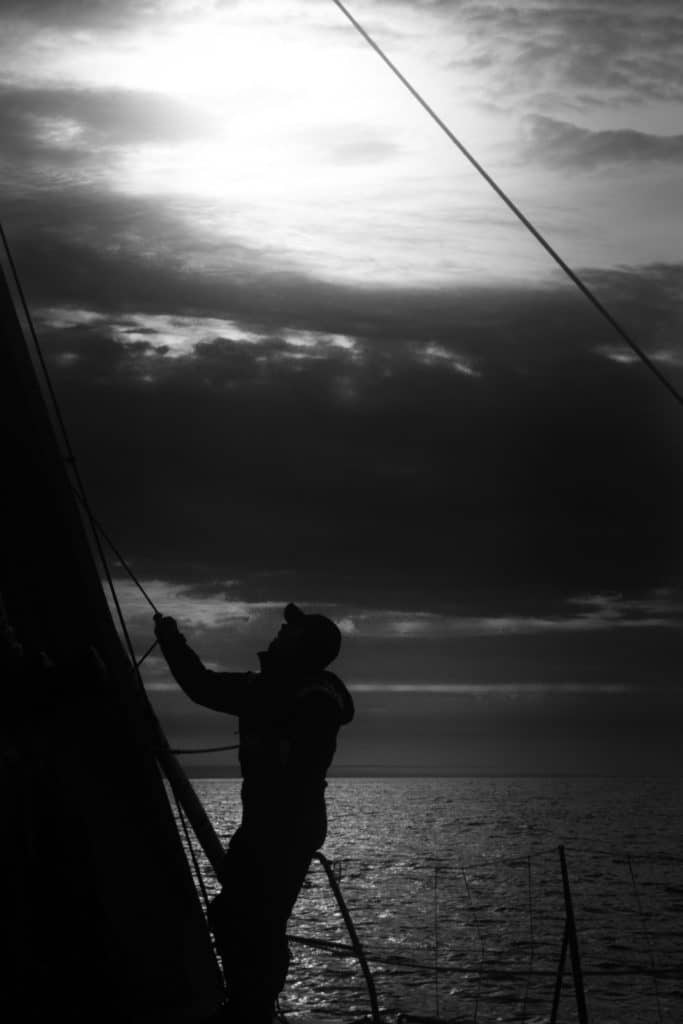
Their third day in the Atlantic remains as pleasant as it begins: tranquil and sunny. The wind is down to 12 knots and they’re finally reaching under their biggest spinnaker. They’re surfing waves, not crashing through them, and for the first time in 42 hours they can freely walk around the boat without getting doused. “Champagne sailing,” says Botin amiably. “That’s what the Brits call this.” A few dolphins even show up and follow along.
Santurde wakes for his morning shift an hour before dawn, the following day, in the midst of a dense fog bank. They have a 20-mile lead on Earendil, but Santurde cautions against complacency. “The finish is still a long way off and the wind is forecasted to die,” he says, “which means the fleet could catch up and the race could basically restart.”
The fog clears but the wind disappears with it. As they drift toward the Verrazano Bridge they’re at the mercy of the current, dragging them into the path of an enormous cargo freighter. Santurde and Botin utter profanities in their native tongue while trying to fill their sails. It’s not working. A Coast Guard boat pulls alongside.
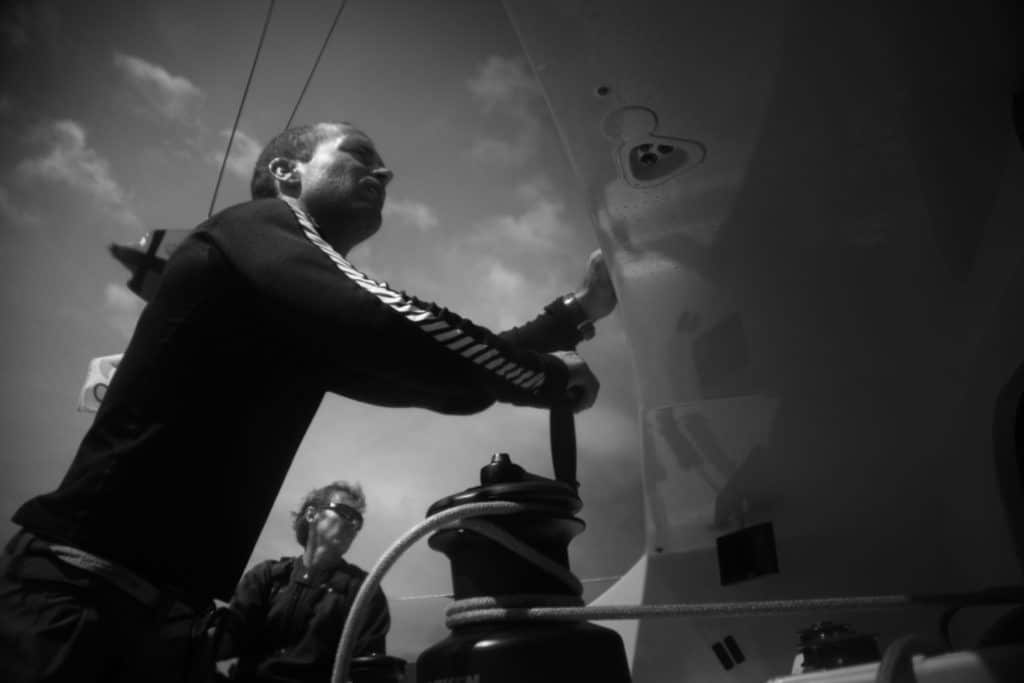
“You have to turn on your engine,” one of the officers shouts.
“I can’t. I’m in the middle of a sailboat race,” Botin responds diplomatically.
“You don’t have a choice.”
“When I get too close I will turn it on.”
“You’re already too close.”
One of the men moves to the side of the boat, poised to board Tales II.
Botin yields, turning on the engine and motoring clear of the freighter’s path. The mood on board is somber. Earnedil is now only 2 miles behind.
Their frustration persists with every remaining mile. Light and shifty winds refuse to cooperate. The current thwarts progress toward the finish, and in desperation they prepare to drop anchor, but the wind fills just in time. Navigating the fluid maze of tugboats, tour boats, and freighters for several hours has them both on edge. After every evasive maneuver Botin climbs below to check Earendil’s position on the radar. They’re creeping ever closer.
Once they finally cross the finish line, the stress melts away. Santurde and Botin pull each other in for a long embrace. Three days of mental, physical, and emotional fatigue evaporate from their tired eyes. After 3 days, 48, minutes, and 3 seconds, they’ve taken more than 7 hours off the race record. Tales II is now the fastest boat to have sailed the 640-mile course from Charleston, SC to Brooklyn, NY.
Santurde puts his hand around Botin’s neck and holds his gaze for a moment.
“We made it,” he says. “We finally made it.”
The Atlantic Cup RC deemed the use of the engine to motor away from the cargo ship did not create an unfair competitive advantage for Tales.
Francis Karl George lives in Stony Brook, New York, as the fleet manager for the Stony Brook School Sailing Team. The Atlantic Cup was his first foray into onboard reporting after the immersive training of Oakcliff Sailing Center’s Media/OBR class in May. His goal is to earn one of the Volvo Ocean Race’s coveted OBR positions. More of his work is at www.fkgeorge.com









